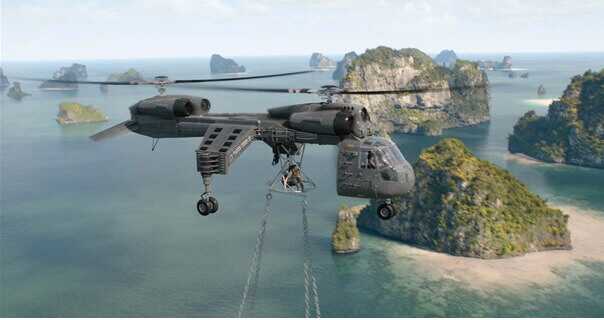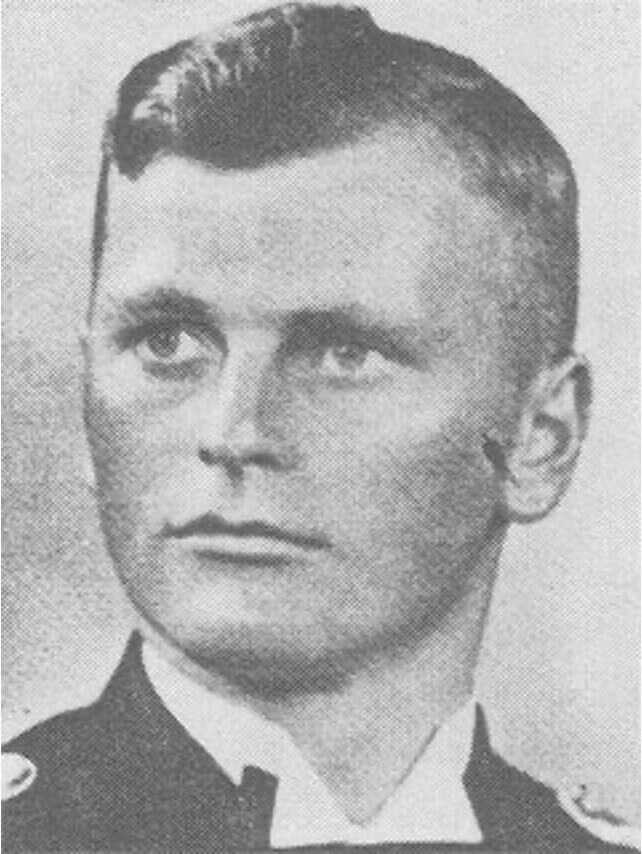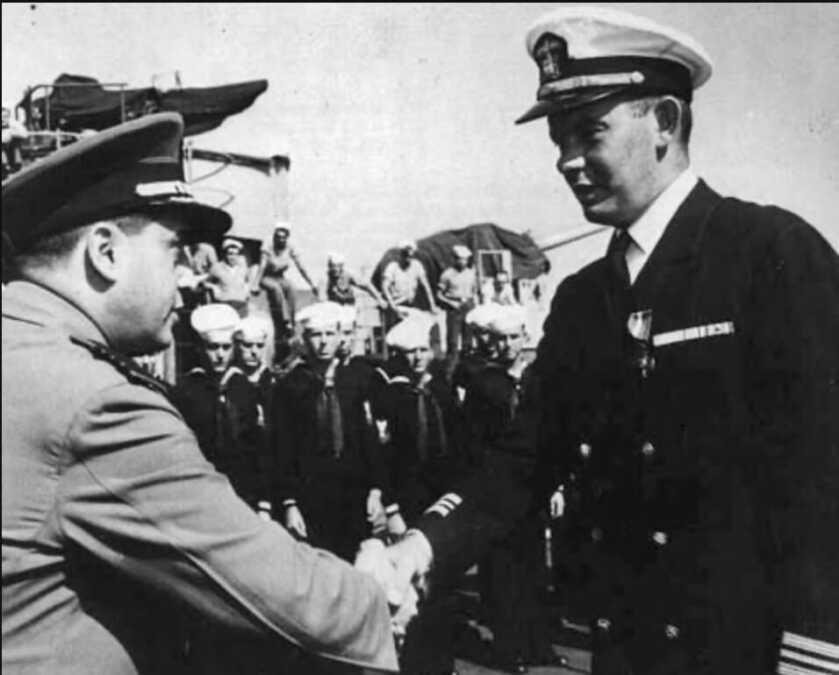
It’s a trope of pirate movies everywhere. Two massive galleons slug it out with their long nines before heaving alongside battered and broken. With masts shattered and rigging in disarray, the two mighty vessels collide like punch-drunk fighters, grapnels spanning the gap as soon as they come within range. Marines, stewards, and able seamen crouch behind the heavy oak with cutlasses and pistols in hand, ready to go. At the Captain’s command, the melee begins.

There’s always somebody who swings Tarzan-fashion from one ship to another amidst sleeting musket fire. As these are movies the injured do not scream for their mothers and those destined to die just fall over without a great deal of fuss. As a species, we have forgotten the details of what happens when two groups of desperate men go at each other with blades. The end result in the real world, particularly onboard an 18th-century Man-o-War with no medical facilities beyond a near-sighted cook with a dirty bone saw, would be gruesome beyond imagining.

The recent Tom Holland epic Uncharted had a variation on that theme that made me want to hurl. In this case, two 16th-century derelict treasure ships once helmed by Ferdinand Magellan are rigged as sling loads beneath these weird twin-rotor Chinook/Skycrane cyborg helicopters. Forget for a moment that the smallest of Magellan’s carracks, the Victoria, weighed 85 tons or 170,000 pounds. Two matching helicopters nonetheless hoist the two supposedly-fragile antique ships out of the Filipino jungle and fly off with them.

There results that same basic ship-to-ship combat set piece only this time it is executed while both vessels are suspended underneath helicopters in flight. Eventually, the Good Guys even use the 500-year-old cannon on one of the ships to shoot down a helicopter. I thought I would be sick. However, it seems not everybody agreed with me. The movie returned $401 million on a $120 million investment and was the fifth-highest-grossing video game movie adaptation of all time. I’m sure we will see sequels until the sun burns out.

While the repel boarders scene in Uncharted indeed savaged credulity, there was an actual exchange on the high seas off the Cape Verde Islands on the evening of May 5, 1943, that was itself pretty darn weird. The epic fight between DE-51, the destroyer escort USS Buckley, and the German U-boat U-66 involved, believe it or not, the weaponization of coffee mugs, empty brass from the American destroyer escort’s deck guns, and a coffee pot. The end result was the last ship-to-ship close-quarters fight in American naval history.

The evening was clear with a bright moon. U-66 was a Type IXC U-boat and the seventh most successful German submarine of the war, having sunk 33 Allied merchant vessels. U-66 was on her ninth war cruise. She had been at sea for four months and was perilously low on fuel. The skipper was Oberleutnant Gehard Seehausen.

Unknown to the Captain and crew of U-66, a US Navy TBM Avenger launched from the American escort carrier USS Block Island on antisubmarine patrol had picked up her radar return and pinpointed the boat’s location some 20 miles from the USS Buckley. The German Kriegsmarine used massive replenishment U-boats called Milk Cows as well as dedicated submarine tenders to resupply their tactical subs with fuel and ordnance while patrolling downrange. On this crisp clear night, U-66 was desperate for a nocturnal rendezvous.

The Buckley’s skipper, Lieutenant Commander Brent Able, headed toward the boat’s location at his best possible speed–around 23 knots. It was LCDR Able’s 28th birthday. Seven miles out he picked up the U-boat on his own radar. Presuming a stationary German submarine on the surface was waiting for resupply, LCDR Able took a gamble and approached the German boat boldly hoping the enemy Captain might mistake him for the expected sub tender.

Once within range, the U-boat skipper fired three red flares, the prearranged signal between his boat and their supply ship while under radio silence. Able closed the distance to 4,000 yards before Seehausen realized his mistake. In desperation, the German skipper ordered a torpedo snapshot in the darkness. The crew of the Buckley was not aware of this until they noticed the German fish passing harmlessly off their starboard side. In response, LCDR Able positioned his ship such that the U-boat was silhouetted in the moonlight and opened fire with everything he had.

For the next two minutes, the American destroyer pummeled the surfaced U-boat with withering fire from her 3-inch deck guns, 40mm Bofors, 20mm Oerlikons, and .50-caliber machine guns. High explosive rounds were observed tearing into the conning tower and superstructure of the boat. Seehausen fired another ineffectual torpedo before beginning to maneuver randomly. By now the Buckley had pulled to within twenty yards of the stricken boat. When the geometry was perfect, LCDR Able gave his vessel a hard right rudder and rode the nimble warship up onto the deck of the U-boat. At this point things got real.
The Close Fight

Now realizing their dire straits, the German skipper ordered his men up and on deck. Some attempted to surrender, while others continued the fight. In the bright moonlight, the next ten minutes were unfettered chaos.

The crew of the Buckley had time to prepare for this moment, and the small arms lockers had been emptied. Under the immediate command of the U-boat’s First Officer Klaus Herbig, German sailors began swarming up and onto the forecastle of the destroyer escort. Pintle-mounted .50-calibers and Thompson submachine guns exacted a horrible butcher’s bill, yet the desperate Germans pushed forward still. When the enemy sailors started clambering onto the deck the Americans took it personally.

Two of the attacking enemy were struck in the head with thrown coffee mugs. The crew of the second 3-inch gun was unable to depress the weapon sufficiently to bring effective fire onto the U-boat so they began throwing the heavy empty cases down on the swarming Kriegsmariners. Despite their valiant efforts, five German sailors still managed to make it onboard the American vessel.

The boatswain’s mate responsible for the forward ammunition party came face to face with a German sailor heaving himself over the deck coaming. The American sailor pulled his 1911 pistol and shot the man dead, his body pitching backward and falling into the sea. The Chief Fire Controlman’s duty station was on the bridge, and he had a Thompson. With a clear view of the chaos below he swept the deck of the German boat with long bursts of automatic fire, obtaining what the skipper later described as, “Excellent results.”

One of the rampaging Germans did manage to make it into the wardroom. He was then confronted by a ship’s cook who doused him in hot coffee. The steward proceeded to give the guy a proper pummeling with the coffee pot. At this point, five Germans have accessed the American vessel and LCDR Able wanted some breathing room. He ordered reverse screws and pulled his destroyer escort off of the ventilated U-boat. The five Germans were captured in short order and then escorted below by a sailor armed with a hammer.

The damaged U-boat was still making turns for about 18 knots, so the fight immediately became dynamic yet again. One German attempted to unlimber the U-boat’s main deck gun. Once again per LCDR Able’s after-action report, his body, “disintegrated when struck by four 40mm shells.” As the U-boat scraped along the Buckley’s starboard side a dead-eyed American torpedo man lobbed an armed hand grenade through the open hatch to the U-boat’s conning tower. The Buckley’s gunners continued to rake the enemy ship with quarter-pound high explosive 20mm rounds. Then the GI grenade detonated with a sickening crump within the bowels of the German vessel.

Before the Americans could react, the U-boat veered into the side of the Buckley near the stern. The crushing impact tore a hole in the engine room and sheared off the starboard screw. With flames spouting from the conning tower and multiple cannon holes, the Germans abandoned ship.
The Aftermath

The entire engagement spanned some sixteen minutes. During the course of the fight, the crew of the Buckley expended 300 rounds of .45ACP, sixty rounds of .30-06, thirty rounds of 12-gauge 00 buckshot, and a pair of fragmentation grenades. This is obviously in addition to the dinnerware and coffeepot.

Over the next half hour, the Buckley recovered 36 German sailors, roughly half of the U-boat’s crew. Oberleutnant Seehausen went down with his ship. Despite some not inconsiderable damage, the Buckley returned to Boston under her own power. She was refit and returned to active service in June of 1944. After 23 years on the reserve list, the Buckley was scrapped in 1969.

Oberleutnant Seehausen was posthumously promoted to Kapitainleutnant and awarded the German Cross in Gold in 1944. He already held the Iron Cross 1st and 2nd classes. He was 26 at the time of his death. U-boat service was the most hazardous posting in the German military. Roughly 75% of U-boat crewmen perished before the end of hostilities.

The USS Buckley earned a Navy Unit Citation for the action. LCDR Brent Able was awarded the Navy Cross, the Navy’s second-highest award for valor. Because of the intimate nature of the engagement, the crew of the Buckley was authorized to wear a combat star on their European-African Theater ribbons. The sinking of the German U-boat U-66 was likely the only naval engagement in history to be waged with ammunition drawn from the ship’s galley.
*** Buy and Sell on GunsAmerica! ***


I’m surprised that you’ve never seen the flying crane. There are several variations, but the one shown is like the ones I’ve seen pictures of….probably in Popular Science magazine or some such.
I did like the description of the arms used…especially the mugs and the coffee pot. “Stay where you are. I have a coffee mug and I know how to use it.”
I’m indeed familiar with the CH-54 Tarhe–the Skycrane. However, this twin-rotor monstrosity is the product of some CGI artist’s fever dream.
Well, My Father always said Army cooks were dangerous in Korea, so why not Navy cooks too????
My uncle Leo died on the USS REID. Never could find out much about the fight with the Japanese.
My father was working in Pittsburg at Dravo when the war broke out. Among other vessels they constructed Destroyer Escorts and PC boats. He told me any DE was welcome to run full ahead and cut a Uboat in half. The skipper would be applauded for his action as opposed to discipline for the possible loss of the vessel. When built a DE had an expected 6 month service life. The Navy considered them expendable.
Excellent as always, Will. Thank you.
My father was a turret gunner on a TBF Avenger and he did patrols off the coast of Africa.
He said he prefered daytime patrols vs the nighttime with a spotlight. During the day
he said you could sometimes see the outline of the sub in the blue water.
I wish I had had more time to hear of his time in the war.
Today, the ship’s diversity officer, who is most likely a tranny, would try to negotiate a peaceful settlement by offering the submarine’s crew a keg of Butt Light.
Dear Dr. Dabbs,
Thank you for your articles. They are always a pleasure to read and do a great job of keeping history alive.
If you haven’t already done so, you might enjoy reading Michael Gannon’s “Operation Drumbeat” (https://www.amazon.com/Operation-Drumbeat-Germanys-Attacks-American/dp/0060920882/ref=sr_1_1?keywords=operation+drumbeat+book&qid=1684763492&sprefix=operation+drum%2Caps%2C102&sr=8-1). I suspect it might provide some grist for the article mill.
David
OK, but what happened to the 117 and what part did the aircraft taking the photos play in the engagement?
Great stuff. Consider writing up USS Laffey (DD-724) next.
Just did a quick net recon. What a great story. I’ll put it in the queue. Thanks.
Outstanding writing! I always look forward to your articles.
Rick
Riveting story, as usual.